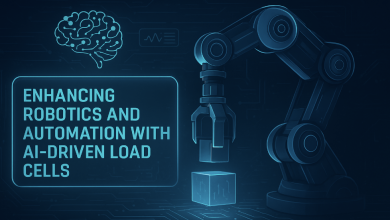
If you’ve been paying even a tiny bit of attention to what’s happening in education tech lately, you’ve probably noticed something wild – AI has basically invited itself to the party. It didn’t knock, didn’t wait, just slid in like that friend who shows up «for five minutes» and ends up reorganizing your entire desk. And honestly, EdTech kinda needed that energy.
Because safety in learning platforms isn’t just a checkbox anymore. It’s a huge deal. And AI isn’t just helping a little – it’s doing a full-on system upgrade. But don’t worry, I promise no boring professor vibes today. Let’s talk like real people about how AI is turning the EdTech safety game upside down, why it matters, and where everything is headed.
AI, Safety, and Why It Suddenly Matters a Lot
So here’s the thing: when most people hear «safety in EdTech», they imagine some digital security guard pacing back and forth with a flashlight. And yeah, cybersecurity is part of it, but the topic is way bigger. Most students today live half their lives online – from coding bootcamps to completing something like the tdlr approved driving safety course just to get it done without leaving the house. And when education moves online, you need someone (or something) keeping an eye on the experience and making sure things don’t go sideways.
This is exactly where AI steps in – and honestly, it steps in like the MVP of the entire season. It tracks behaviors, detects risks, assists moderators, identifies weird activity, and does all of this faster than any human team could dream of. Sounds cool already, but trust me, that’s barely the intro.
Let’s Get Practical: What AI Is Already Doing in EdTech
If you’re thinking this is all theoretical – nope. EdTech platforms have already launched AI features everywhere. Smart moderation, adaptive feedback, fraud detection, personalized recommendations – the whole package. But one of the most interesting areas is online safety-focused training, especially courses where staying attentive actually matters.
For example, in online driving safety programs, some courses already use AI to track your focus, notice if you’re rushing, and suggest a quick review if you zone out halfway through a lesson. One course that does this really well is:
Texas Defensive Driving Course – Driver Safety Online – done right!
- Helps you clean up traffic tickets and unlock insurance perks
- Recognized in every courthouse across Texas
- Officially certified by the state’s TDLR (license CP154)
- Designed to be as short as Texas law allows
- Straightforward pricing with zero surprise add-ons
- No big final exam – finishing is practically guaranteed
In setups like this, AI isn’t some strict hall monitor. It’s more like a smart assistant quietly nudging you back on track when you drift. It blocks shortcuts, protects your data, and still manages not to be annoying – which is honestly impressive.
AI Moderation: Finally Less Drama Than the Group Chat
If you’ve ever participated in any online course chat, you already know how quickly things can get messy. One moment everyone’s discussing homework, and the next someone is two messages away from a full meltdown. Trolling, bullying, over-sharing – you name it.
AI moderation is saving everyone’s sanity. And no, it’s not the old-school «bad word filter» that freaks out at harmless phrases. Modern AI reads context. It understands tone. It analyzes patterns instead of treating every message like a stand-alone disaster.
Personalization: When AI Learns Your Habits Better Than Your Spotify Algorithm
One of the coolest AI superpowers is adaptive learning – where the platform figures out exactly what you need, not just what the average student needs. But personalization isn’t only about customizing difficulty levels. It’s also about safety.
Let’s say your performance suddenly drops, your answers get scattered, or you speed through tasks like you’re being chased. AI can pick up on that. Instead of judging you, it might slow things down, recommend a pause, or explain concepts again. In courses where accuracy and attention matter, that’s a lifesaver – literally.
Cyber Protection: Keeping Creeps Out of Your Data
And then there’s the cybersecurity side – the part that matters even if you never think about it. EdTech platforms hold tons of sensitive info: grades, ID details, location data, payment records.
AI constantly scans for weird logins, unusual patterns, fake accounts, and suspicious attempts to break into systems. It does this 24/7, no coffee breaks needed. Basically, it guards your personal info like a tiny digital dragon sitting on a treasure pile.
Transparency and Ethics: Because Even AI Needs Rules
Here’s the thing – AI isn’t perfect. It can mess up, misunderstand sarcasm, or take something too literally. That’s why the future of EdTech safety isn’t just about fancy algorithms.
When people understand the rules, they trust the system more. And when they trust the system, they feel safer. And when they feel safer, they actually learn better. It’s a whole chain reaction.
So What’s Next? A Future Where AI Doesn’t Replace Teachers – It Protects Students
Looking ahead, AI is going to become even more embedded in the learning experience. But not as a strict robot dictator. More like the ultimate behind-the-scenes assistant – the kind that keeps the space safe, personalizes your experience, detects danger, and makes learning way smoother.
The goal isn’t to replace teachers. The goal is to let them focus on helping you grow, instead of drowning in endless admin work or moderating every chaotic group chat. AI handles the safety net so real humans can handle the real education.
And honestly? That sounds like a win for everyone.




